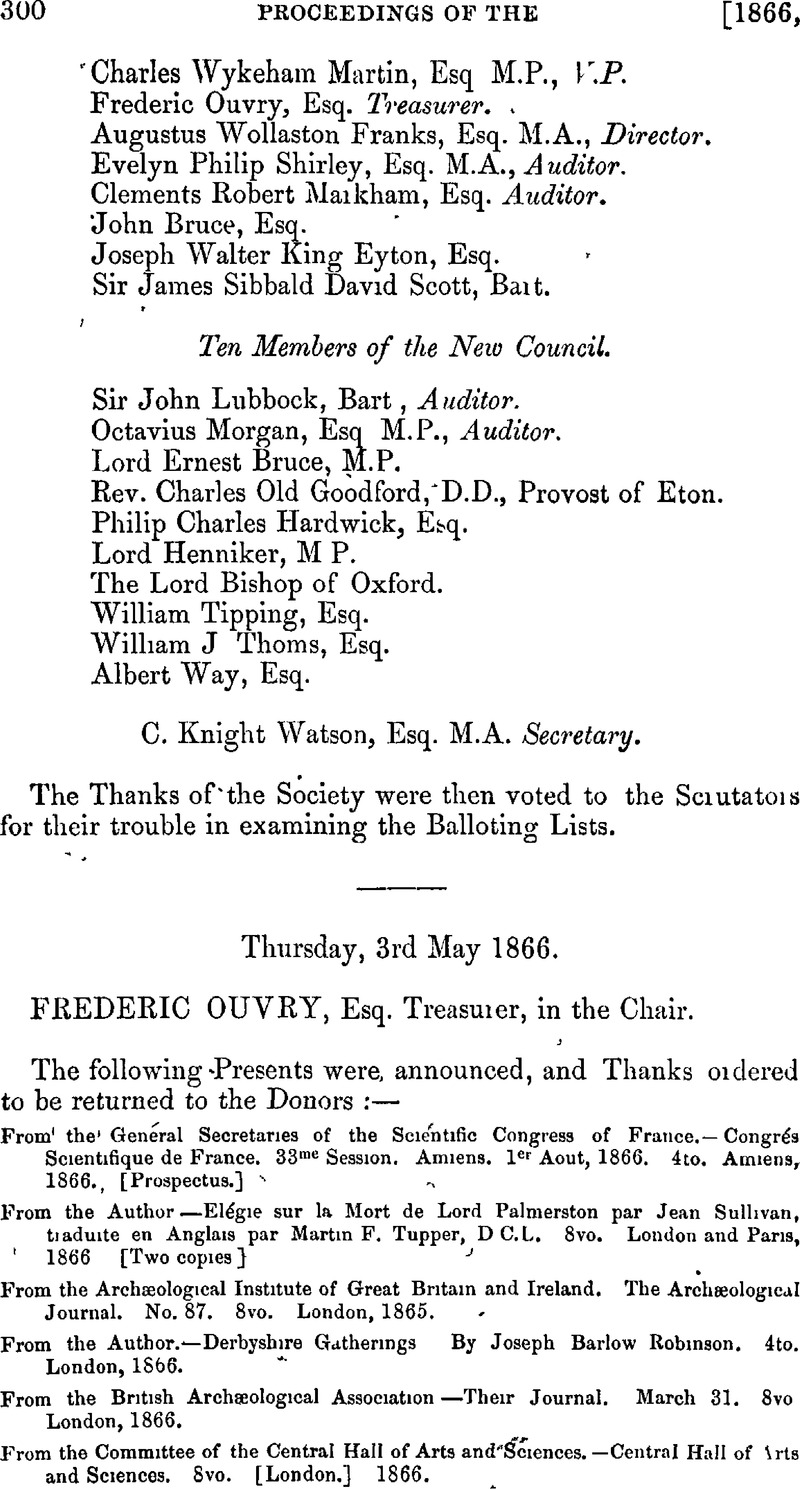No CrossRef data available.
Published online by Cambridge University Press: 10 May 2010

page 307 note * See Mon. Ang. vi. 140, where it appears that Lanthony possessed at the Dissolution 1l. 18s. 0½d. rents of assize in Alrichseye; in that account, however, included (as printed) in the Marches of Wales. In King John's Confirmation Charter to Lanthony, ib. 137, the gift appears. Ex dono Nigelli filii Hordfast et concessione Henrici de Albeny et Roberti filii ejus [habent monachi] quicquid prædictus ‘Nigellus tenuit in sokâ. de Hanelowe in Aylricheseya cum ecclesia de Hanelanne (read Hanelauue).
Lysons (Bedfordshire) informs us that there is a manor at Henlow called Henlow Lanthony, which was, as early as 1293, part of the possessions of that Abbey. Henlow is close to Arlesey, the ancient Aldricheseye, and it would seem from the extract of Nigel's deed of gift that the latter place was included in the soke of Henlow. The two places, however, are distinct in Domesday, from which record we learn that Erfastus held Haneslau and Alriceseia of Nigel de Albini. Nigellus filius Hordfasti, the donor, was probably the son of the Domesday tenant Erfastus, the superior lords being Henry (of Cainho) second son, and Robert grandson, of Nigel de Albini.
page 308 note * For a fuller account of this discovery see the original Danish treatise in Annaler for nordisk Oldkyndighed (1862) published by the Society of Northern Antiquaries, Copenhagen, 1864. Illustrated with four plates; from one of which the plan here given has been copied.
page 312 note * Vide Steenstrup: tmod Hr. Professor Worsaaes Tredeling af Steenalderen. Et Bidrag til Forstaaelsen af Stenalderens Kultur heri Norden. (From the Review of the Transactions of the Royal Danish Society of Sciences, November 1861.)
page 315 note * I do not mean to Bay that a fire cannot have been lighted in the grave at a later time, but then, as remarked above, for quite another purpose.
page 316 note * Schoolcraft's Indian Tribes, i. pp. 80 and 102. In the Southern States of the United States tumuli have often been found containing large earthen vessels, filled with unburnt human bones, and sometimes with the cranium as a cover. A similar treatment of the corpses is mentioned among other places in B. E. Hildebrand's Berättelse om antiquariska undersókningar i Vestergótland ar 1863 (Antiquarisk Tidskrift fór Sverige, i. Stockholm 1864)—and in several places in Sir John Lubbock's “Prehistoric Times.”
page 316 note † An extract from Worsaae's unprinted Report of the tumulus at Borreby is given in my Danish Treatise on the Hammer Tumulus, pp. 24–27, and the antiquities which have been found there are sketched in A. P. Madsen's “Afbildninger af Danske Oldsager og Mindesmærker, Hefte x.”
page 317 note * Vide the above-cited work.
page 317 note † Observations on the primeval antiquities of the Channel Islands. Archæological Journal, vol. i. p. 150.